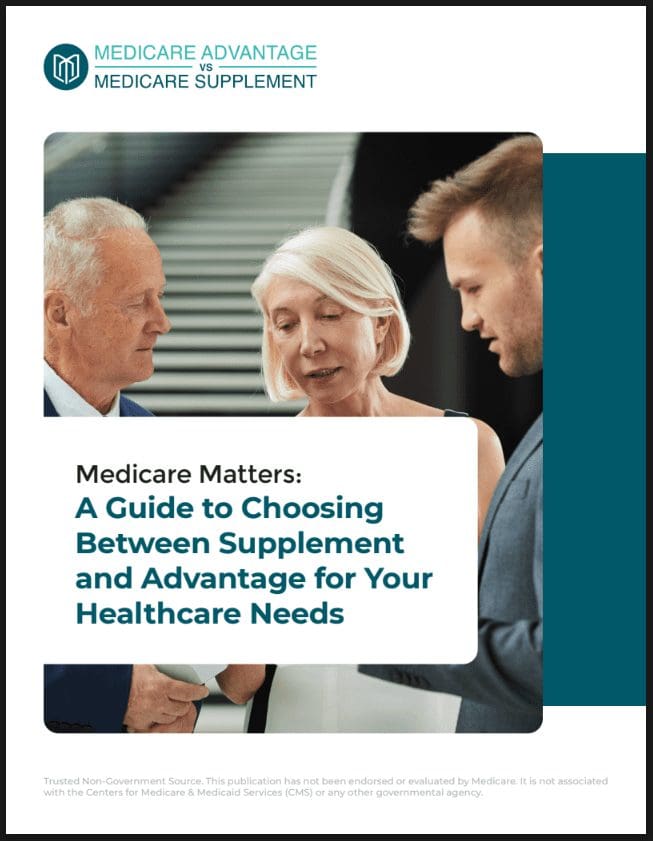Key Takeaways
-
Even with Medicare, you can still face thousands in out-of-pocket costs each year, especially if you require ongoing treatment or services that aren’t fully covered.
-
Understanding what Medicare does not cover—such as long-term care, most dental and vision, and some prescription drugs—is essential for planning your healthcare budget in retirement.
What Medicare Covers—and What It Leaves Out
Medicare provides significant financial protection for older adults, but it is not all-inclusive. While it covers a wide range of hospital and medical services, there are gaps that can lead to unexpected expenses.
Covered Services
Medicare is divided into four parts:
-
Part A covers inpatient hospital stays, skilled nursing facility care (for limited durations), hospice, and some home health services.
-
Part B includes doctor visits, outpatient care, durable medical equipment, and preventive services.
-
Part D provides prescription drug coverage but with limitations.
-
Part C, or Medicare Advantage, combines A and B and often includes extra benefits, but may impose additional restrictions and cost structures.
Uncovered Services
Medicare does not cover several common and often expensive services, such as:
-
Long-term custodial care (e.g., assisted living or nursing homes beyond 100 days)
-
Most dental care, including dentures
-
Eye exams and eyeglasses
-
Hearing aids and exams
-
Routine foot care
-
International medical treatment
The Hidden Costs That Can Add Up Fast
Many beneficiaries are surprised when they realize how much they must still pay out of pocket, even after enrolling in Medicare.
Premiums and Deductibles
-
Part A is usually premium-free if you worked and paid Medicare taxes for at least 10 years. However, the deductible in 2025 is $1,676 per benefit period.
-
Part B requires a monthly premium of $185 in 2025, along with an annual deductible of $257. After meeting the deductible, you typically pay 20% of the Medicare-approved amount for services.
-
Part D plans have a maximum deductible of $590 in 2025, with varying copayments and coinsurance depending on your medication tier.
Hospital and Skilled Nursing Costs
After 60 days in a hospital, you pay daily coinsurance that rises significantly:
-
Days 61-90: $419 per day
-
Days 91-150 (lifetime reserve days): $838 per day
Skilled nursing facility coverage ends after 100 days, at which point all costs fall to you unless you have additional insurance.
Prescription Drug Expenses
While Medicare Part D helps, you still face out-of-pocket costs. In 2025, a $2,000 cap on annual out-of-pocket drug costs offers relief, but until you hit that cap, you pay your share through deductibles, copays, and coinsurance.
Additionally, some high-cost specialty drugs may reach that cap quickly, leaving you with significant upfront expenses.
Services That Catch People Off Guard
Understanding what services can lead to surprising costs is crucial for budgeting and peace of mind.
Long-Term Care
Medicare does not pay for custodial care in assisted living or nursing homes beyond 100 days following a qualifying hospital stay. These services can cost tens of thousands of dollars annually. Without long-term care insurance or savings, many retirees find themselves financially vulnerable.
Dental, Vision, and Hearing
Routine dental exams, cleanings, crowns, dentures, eyeglasses, and hearing aids are not covered by Original Medicare. These can become recurring out-of-pocket expenses, especially as your healthcare needs increase with age.
Emergency Care Abroad
Medicare typically does not cover medical services outside the United States. Travel medical insurance or supplemental plans may be necessary if you plan to go abroad.
Mental Health and Therapy Limits
Although Part B does cover outpatient mental health services, including therapy and psychiatric evaluations, you still owe 20% coinsurance after the deductible. Also, in-network providers who accept Medicare may be limited, especially in rural areas.
Telehealth and Virtual Care
Medicare covers telehealth under specific conditions, but not all services or providers may qualify. Some telehealth services require periodic in-person visits (at least once every 12 months starting October 2025), which could be a burden for people with limited mobility or transportation options.
Income-Based Surcharges That Sneak Up
Many people are unaware that higher-income retirees pay more for Medicare. This is known as the Income-Related Monthly Adjustment Amount (IRMAA).
For 2025, if your income from 2023 exceeds:
-
$106,000 (individual)
-
$212,000 (joint filers)
You will pay higher premiums for Part B and Part D. These surcharges are deducted from your Social Security payment or billed directly if you are not receiving Social Security.
If you cross a threshold by even a few dollars, you may face monthly premium increases of hundreds of dollars.
Why Out-of-Pocket Maximums Don’t Apply to Original Medicare
Many assume that Medicare has an annual out-of-pocket maximum like employer plans or private insurance. It does not.
Original Medicare has no cap on what you might spend in a year. If you have frequent hospitalizations, ongoing outpatient treatment, or costly medications, your expenses could rise into the tens of thousands.
Some beneficiaries opt for supplemental insurance to reduce these risks, but those policies come with their own premiums and limits.
Cost-Sharing Adds Up With Frequent Use
Even seemingly small percentages can snowball when you use services often. For instance:
-
20% of a $1,000 outpatient procedure is $200.
-
If you need that procedure monthly, that’s $2,400 per year.
The more you rely on healthcare services, the more your coinsurance responsibilities grow. And these don’t include other costs like transportation, home modifications, or over-the-counter items not covered by Medicare.
Gaps in Preventive and Chronic Care Services
Medicare covers many preventive services at no cost to you, but not all tests, screenings, or follow-up treatments are fully covered.
If you have a chronic condition, such as diabetes, heart failure, or COPD, you may need frequent tests, medications, and follow-up appointments. Medicare covers much of this, but the copayments and coinsurance can be ongoing and substantial.
Programs like Chronic Care Management (CCM) are available, but may involve extra costs, especially if you have more than one chronic condition.
Planning Ahead to Avoid Financial Surprises
To minimize the impact of unexpected Medicare costs, consider these strategies:
-
Review your plan annually. Your needs and plan coverage may change year to year.
-
Track your income. Keep income below IRMAA thresholds when possible to avoid surcharges.
-
Set aside emergency funds. Healthcare surprises often come with short notice.
-
Use in-network Medicare-assigned providers. This helps limit charges above Medicare-approved rates.
-
Understand coordination of benefits. If you have retiree coverage or VA benefits, know which plan pays first.
Supplemental Insurance Isn’t Always the Safety Net You Think
While medigap and other supplemental options can help reduce cost-sharing, they are not free. Monthly premiums can add up quickly, and not all services are fully covered even with these plans.
Medigap also does not include Part D coverage, which you must purchase separately. And if you miss your Medigap enrollment window or try to enroll later, you may face medical underwriting or denial of coverage.
The Risks of Ignoring Annual Changes
Each year, Medicare adjusts premiums, deductibles, and benefit structures. In 2025, we’ve seen modest increases in Part B premiums and deductibles, along with the new out-of-pocket drug cap under Part D. But future years could bring higher costs, service limitations, or benefit restructuring.
Failing to review your Annual Notice of Change (ANOC) or plan documents each fall can leave you with cost increases or dropped coverage you weren’t expecting.
Paying Attention Now Can Save You Later
Understanding what Medicare does and doesn’t cover can protect you from costly surprises and allow you to budget more realistically. Don’t assume Medicare covers everything, and don’t wait until a medical issue forces you to find out the hard way.
To protect your finances and get the most value out of your benefits, speak with a licensed agent listed on this website. They can help you evaluate your options, understand your costs, and avoid gaps that could result in high out-of-pocket spending.










